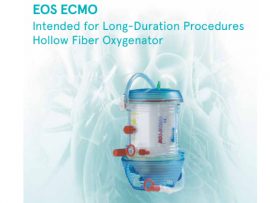Abstract Extracorporeal membrane oxygenation (ECMO), an advanced life support method, was developed to treat severe cardiac and pulmonary failure in critically ill patients. ECMO was previously used to treat ARDS,..
Read MoreAbstract Extracorporeal Membrane Oxygenation (ECMO) is associated with significant mortality. Provision of high-quality end-of-life (EOL) care for patients supported on ECMO entails specific physiological, pharmacological, and technical considerations. Limited guidance..
Read MoreAbstract This retrospective cohort study describes all children transported on extracorporeal life support (ECLS) by the Stollery Children’s Hospital Pediatric Transport team (SCH-PTT) between 2004 and 2018. We compared outcomes..
Read MoreAbstract Background: The prevalence of delirium and its association with long-term outcomes of extracorporeal membrane oxygenation (ECMO) therapy have not yet been identified. We aimed to investigate the prevalence of delirium..
Read MoreAbstract Decision-making surrounding extracorporeal membrane oxygenation initiation and decannulation has become a key challenge in critical care. Nuanced communication skills and transparent discussions about prognosis are imperative during this lifesaving,..
Read MoreAbstract Placement of extracorporeal membrane oxygenation (ECMO) in obese patients has been challenging; however, cannulation risk in obese patients has not been clearly investigated. We therefore explored ECMO cannulation complications in this..
Read MoreAbstract Placement of extracorporeal membrane oxygenation (ECMO) in obese patients has been challenging; however, cannulation risk in obese patients has not been clearly investigated. We therefore explored ECMO cannulation complications in this..
Read MoreAbstract Purpose: Among acute respiratory distress syndrome (ARDS) patients in intensive care units, the efficacy of lung recruitment maneuver (LRM) use is uncertain taking into account the most recent randomized..
Read MoreAbstract Since the outbreak of the coronavirus disease 2019 (COVID-19) pandemic, more than 153 million cases have been confirmed, and more than 3.20 million individuals have died worldwide. The strategies..
Read MoreAbstract Acute respiratory distress syndrome (ARDS) after cardiac surgery is reported with a widely variable incidence (from 0.4%-8.1%). Cardiac surgery patients usually are affected by several comorbidities, and the development..
Read MoreAbstract Here, we report the case of a 55 year old male patient without significant preexisting cardiovascular disease who received a deceased donor liver transplant. Intraoperatively, the patient developed cardiogenic..
Read MoreAbstract Patients with acute respiratory distress syndrome (ARDS) who were placed in the prone position had improved gas exchange and reduced intensity of inspiratory effort compared with the supine position,..
Read MoreAbstract Objectives: Recent analyses show higher mortality at low-volume centers providing extracorporeal membrane oxygenation. We sought to identify factors associated with center volume and mortality to explain survival differences and..
Read MoreAbstract OBJECTIVES: There is little evidence to guide fluid administration to patients admitted to the ICU following cardiac surgery. This study aimed to determine if a protocolized strategy known to..
Read MoreAbstract Neurologic injury in the form of cognitive decline, delirium, and stroke are common phenomena in patients undergoing cardiac surgery and continues to be one of the most common complication..
Read MoreAbstract As New York State quickly became the epicenter of the COVID-19 pandemic, innovative strategies to provide care for the COVID-19 negative patients with urgent or immediately life threatening cardiovascular..
Read More








